Before you build a brand, you need to understand the conditions within that brand will live and that is the function of the Brand Strategy Session.
If you were to sit in a dentists chair and he began revving his drill like a Honda 50 before even looking inside your mouth, you’d be out of that chair quicker than he could say “open wide”.
Off the shelf solutions work for many industries, but for others an understanding of the problem is paramount for a positive solution.
When it comes to branding, that understanding is achieved through an effective discovery session and in this article you’ll learn all you need to know about how to run one.
What Is A Brand Discovery Session?

On a basic level, a session is just a fancy word for meeting; therefore a discovery session is simply a meeting between the key players.
Building a brand has very little to do with logos, fonts and colours, and everything to do with strategically bringing a business and the group of people it aims to serve, together.
A discovery session lays bare the critical information about the business, the group of people its attempting to appeal to and the environment where this new relationship with blossom.
In essence, this session provides the initial ingredients for the foundation of the brand to be built.
Brand Discovery Session Definition
A brand discovery session is a meeting between the business leaders and brand builders to uncover the critical information required to build a strategic brand.
Discovery Session Participants
(Who Are They?)
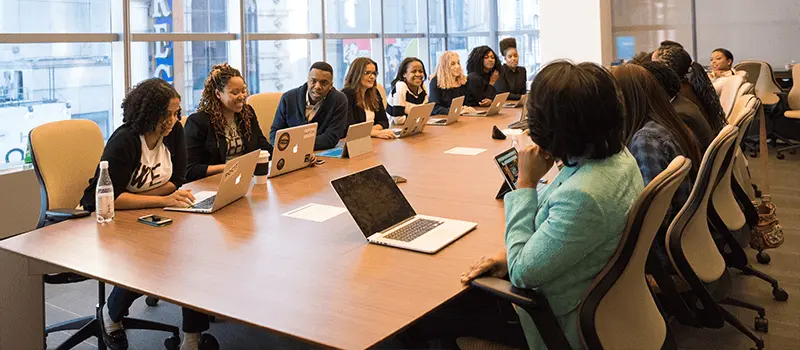
A discovery session can be conducted in a room of 20+ people or over the phone between two.
This is determined by many factors including the size of the business and project as well as the processes of the branding agency or consultant.
At a minimum, the decision maker within the business and the brand strategist would be required to attend.
With smaller businesses, there is usually a single decision-maker while larger organisations often have multiple decision-makers all with a vested interest in the direction of the brand.

Although no decisions are actually made within the discovery session, it’s important that the decision makers are involved from the beginning to avoid any oversight.
How you conduct your discovery sessions will be largely down to the businesses you’re helping and the structure of your brand development processes.
PRO Brand Strategy BluePrint
Build Brands Like A Pro Brand Strategist

The Goal Of A Discovery Session
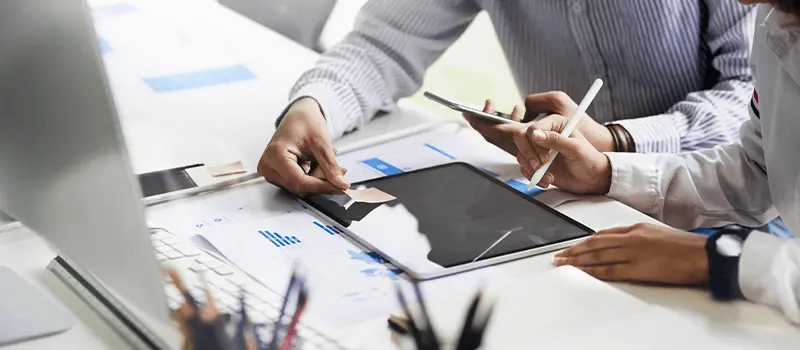
The goal of the discovery session is to ensure the brand-building team have a clear understanding of the business, the intended audience and the market landscape before strategizing an approach.
The information gathered from the discovery session provides the details from which critical decisions are made.
If this information is incomplete, inaccurate or has been overlooked, the brand from which it’s built has little chance of appealing to the intended audience.
The goal of the discovery session, therefore, is to gather as much accurate information as possible about the business, the audience, and the landscape, to enable a sound strategy.
Explore Brand Strategy
Programs & Tools
How To Run A Brand Discovery Session
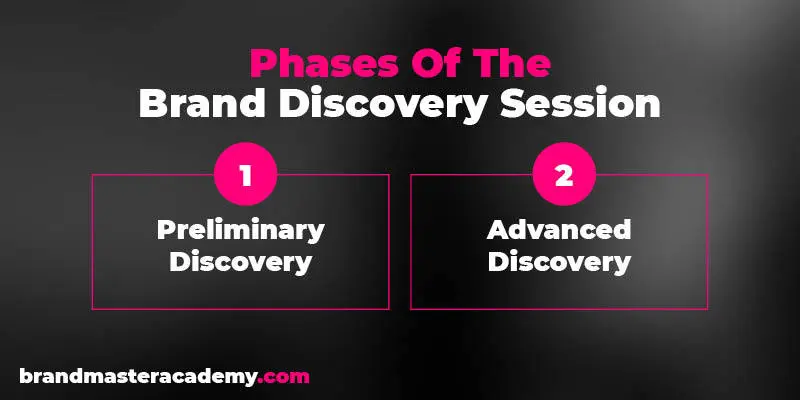
Traditionally, the discovery session is divided into two phases, which are
Preliminary Discovery Phase
Advanced Discovery Phase
Together, the two phases provide the necessary ingredients and both are critically important to uncovering an accurate understanding of the conditions of the brand’s environment.
Phase #1
Preliminary Discovery

This phase is held between the brand strategist and the leadership team.
The strategist directs the session with a series of questions designed to extract the required information from the perspective of the decision-maker of the business.
These questions focus on (but aren’t limited to):
Business Operations
Existing Customers
Ideal Customer
Direct Competitors
Indirect Competitors
Business Strengths
Business Weaknesses

The answers extracted from the business leaders paint a picture of the market conditions from their perspective.
It’s important to note however, that different business leaders will have varying degrees of useful or applicable information.
Some will have little more information that how to produce the result that the business offers.
This is why phase two is so important.
Phase #2
Advanced Discovery
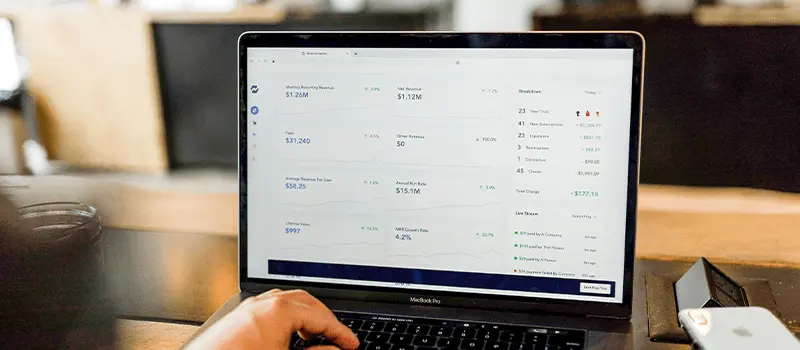
Phase 2 of the discovery session moves away from the collaborative environment and the leadership team to a data-driven environment that aims to
A)
Confirm the assumptions and information extracted from Phase 1
B)
Uncover new information from available data sources to ensure clarity
During this second phase, the strategist first confirms the accuracy of the information collected in Phase 1, going back to the leadership for confirmation or discussion where required.
Then they attempt to identify previously undiscovered information relating to the industry trends, market conditions, target audience and competitive landscape.
The information gathered here, allows the strategist to develop insights and a preliminary strategic direction they might take the brand.
Discovery Session Template[Key Question Categories]
![Discovery Session Template[Key Question Categories]](https://brandmasteracademy.com/wp-content/uploads/2020/04/Discovery-Session-TemplateKey-Question-Categories.webp)
Brand strategy is a game of creative thinking and every strategist has their own approach to extracting the information they need to develop a strategic solution.
Over time, strategists learn the questions that are most effective for them in drawing out the required information and these questions will differ depending on the industry, leadership team and project conditions.
The questions the strategist asks are often broken up into 4 categories.
Category #1
Business Questions
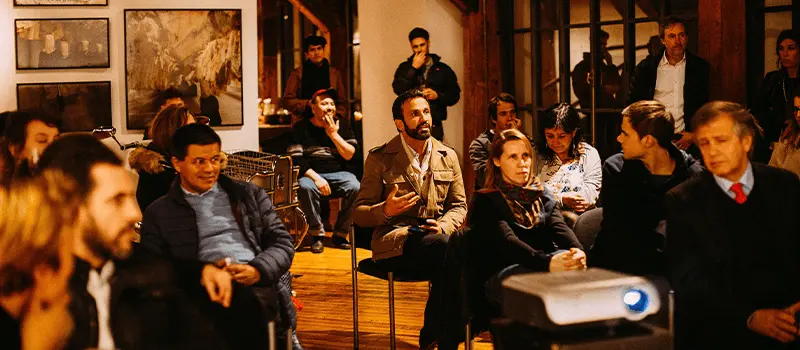
These questions revolve around the understanding of their business, which include:
Tell me about your business
Tell me about your operations
What are the strengths of your business?
Where are your weaknesses?
What changes have you seen in your industry in recent years?
Category #2
Audience Questions

These questions uncover the understanding of the target market, which include:
Who is your target audience?
What do you know about them as a group?
How would you describe their day-to-day lives?
Why do they need your solution?
Why would they choose you?
How would your solution impact their lives?
Category #3
Competitor Questions

These questions highlight the understanding of the market competitors, which include:
Who are your main competitors
Who else could your audience go to for a similar solution?
Why would your audience choose your competitors over you?
Where do you believe you have an advantage over them?
Category #4
Goals, Outcomes And Deliverables

These questions extract what exactly the client wants to achieve with their brand and what they expect from your services:
What are your goals for this project?
When do you want to reach those targets?
What’s your idea of success from this project?
What are your long-term goals for your brand?
The Brand Discovery Checklist
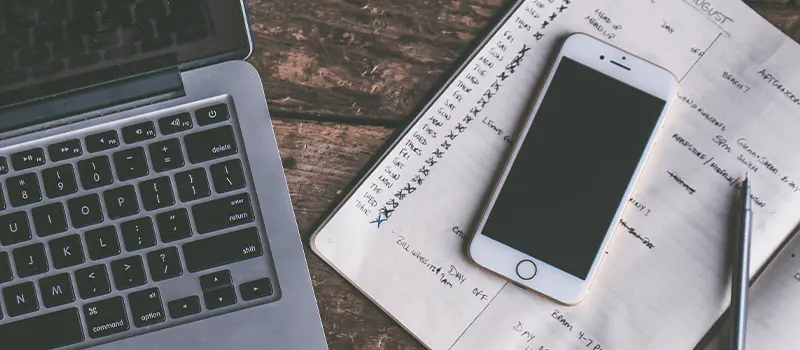
Before jumping into a brand discovery session, ensure you have your checklist at hand to avoid overlooking any critical information at hand.
This checklist should include:
✔️ Key decision maker participation
✔️ Confirmed time allotted
✔️ Preliminary industry research
✔️ Preliminary business research
✔️ Questions: Business Category
✔️ Questions: Audience Category
✔️ Questions: Competitor Category
✔️ Questions: Goals, Outcomes and Deliverables
Over To You
The discovery session is a critical phase of the entire brand building process as it provides the ground word on which the brand is build.
An inaccurate, incomplete or ineffective discovery session can result in critical missed opportunities or a misaligned brand.
Before you sit down with your prospects, make sure you have a clear end goal in mind from your session and processes to ensure its outcome.
Now over to you…
Have you held discovery sessions in the past or are you approaching them for the first time?
Will you take all or part of the above techniques into your brand development processes or do you have any challenges around the discovery session?
Let me know in the comments. I’d love to hear from you.
On-Demand Digital Program
Brand Master Secrets
Make the transition from hired-gun to highly valued brand strategist in less than 30 days. The systems, frameworks and tools inside this comprehensive program are all you need to level up.








I have a brand discovery session with a potential client scheduled for today, and having read this, I’m confident that it would go well and success will be achieved.
Thanks a lot for this insightful piece.
Delighted to hear Femi… the Discovery went well ?